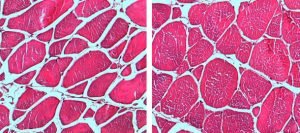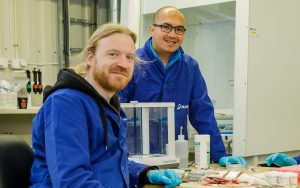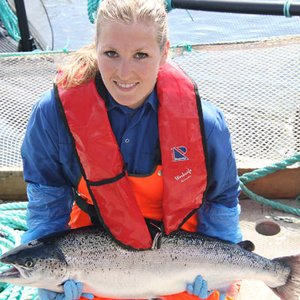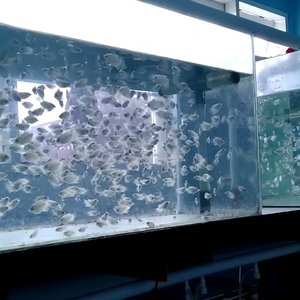It is a well-known fact that smolt grow faster in recirculation systems when the current increases. Nofima researchers have now discovered that it is primarily the muscles, rather than the other organs, which grow when salmon swim in a strong current.
The Nofima project aimed to find the optimum water velocity for smolts in RAS systems. Post-smolts (80 g) were divided into groups that would swim for three months in water flowing at four different velocities. The velocities that were tested were 0.5 body length/second (low), 1 (medium), 1.8 (high) and 2.5 (very high).
In commercial RAS farms, less than one body length per second is the most common velocity. “It is not realistic to introduce water velocities that are much higher than the industry standard because this requires special equipment and powerful pumps suitable for achieving such high velocities,” said Gerrit Timmerhaus, researcher at Nofima
Researchers found that weak currents resulted in a low condition factor, i.e. a long, narrow body shape, while strong currents resulted in relatively wider fish (a high condition factor) and increased growth rates due to muscle growth.
Even though producers want a high percentage of muscle and rapid growth, researchers do not know how this type of salmon would manage during the growth phase in the sea, and whether or not a low condition factor would be compensated for in the salmon by muscle growth at a later stage. One finding, in a previous trial conducted at Nofima showed that strong currents resulted in increased resistance to diseases.

Muscle fibre in post-smolt in weak current (left) and very strong current (right). The muscle fibers were smaller and elongated in low current and larger and rounder in high current. Photo: Carlo Lazado © Nofima
Salmon swimming in strong currents swim in shoals and researchers think that this is a sign that they are optimizing their use of energy. A higher proportion of skin damage was recorded, including scale loss and hemorrhagic patches, with increasing velocities. However, the overall changes were not severe.
“Based on this research and previous research conducted at Nofima, I believe that it is optimal for post-smolts to swim in water velocities between 1 and 1.8 body lengths per second. Anything below 1 means that their growth potential is not utilized and they do not build up resistance to disease, and at velocities above 1.8, we risk making compromises with the health of the barrier tissue of the fish,” said Timmerhaus.
This research was conducted at the Norwegian Centre for Research-based Innovation, CtrlAQUA SFI, in Sunndalsøra.













